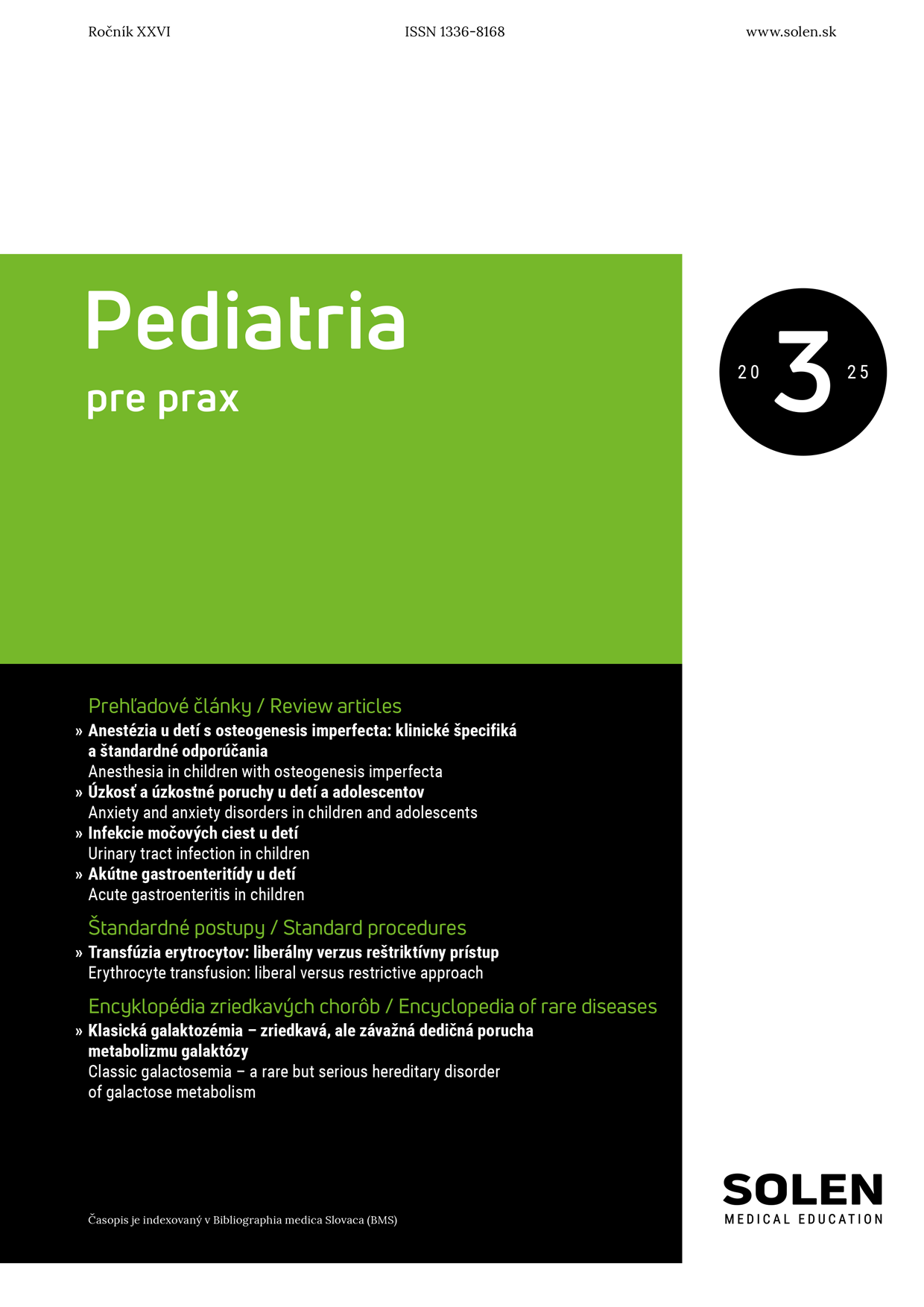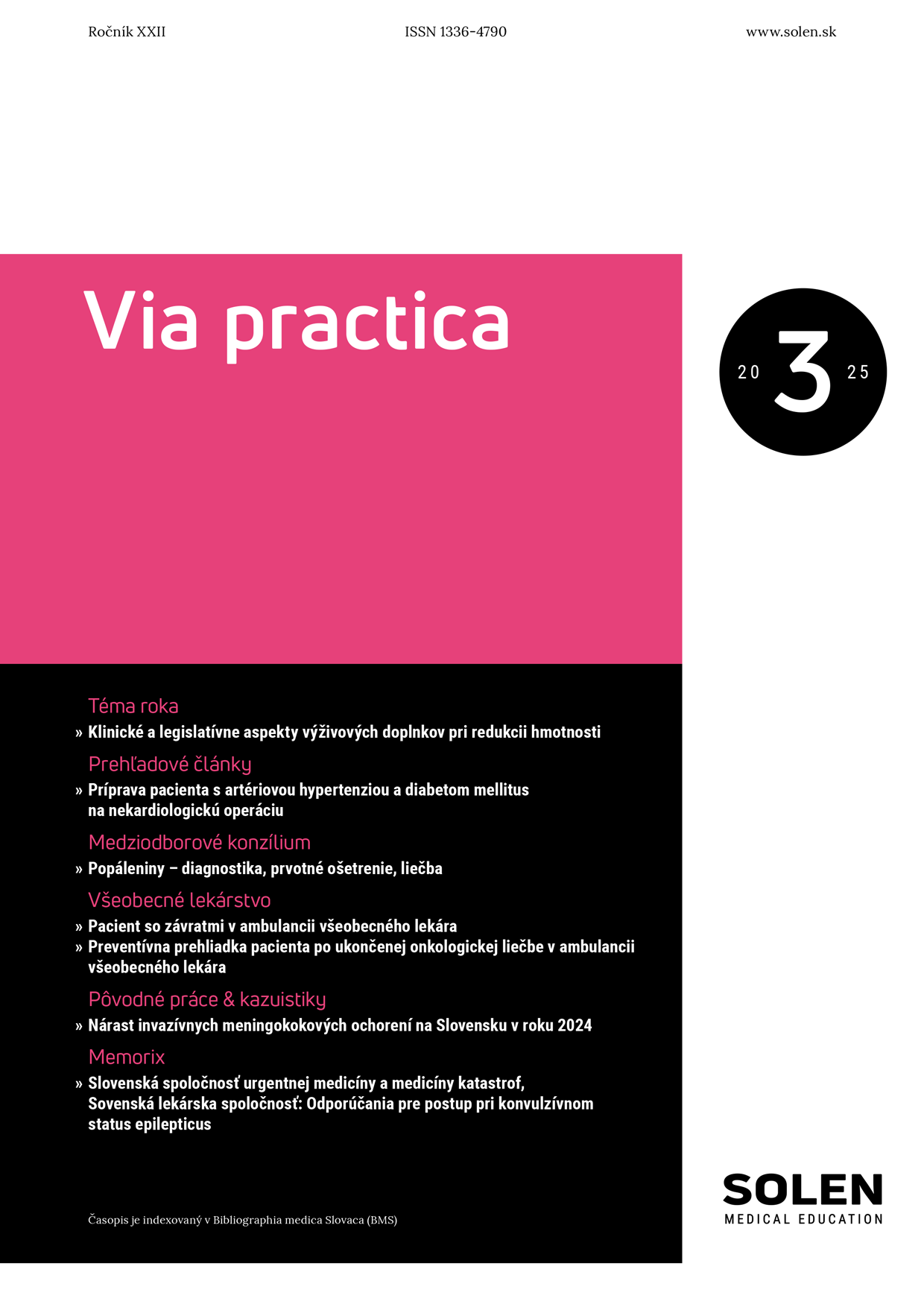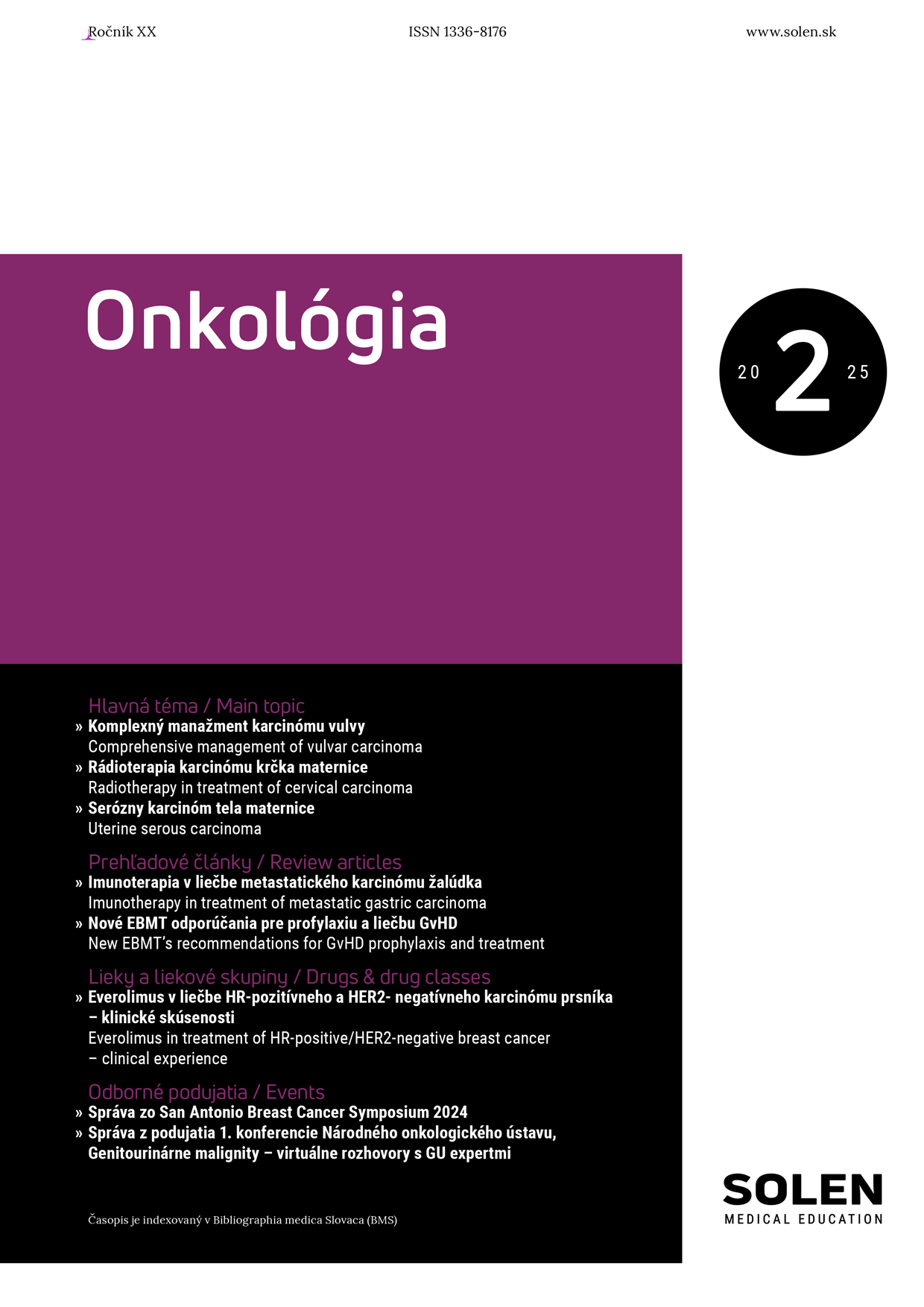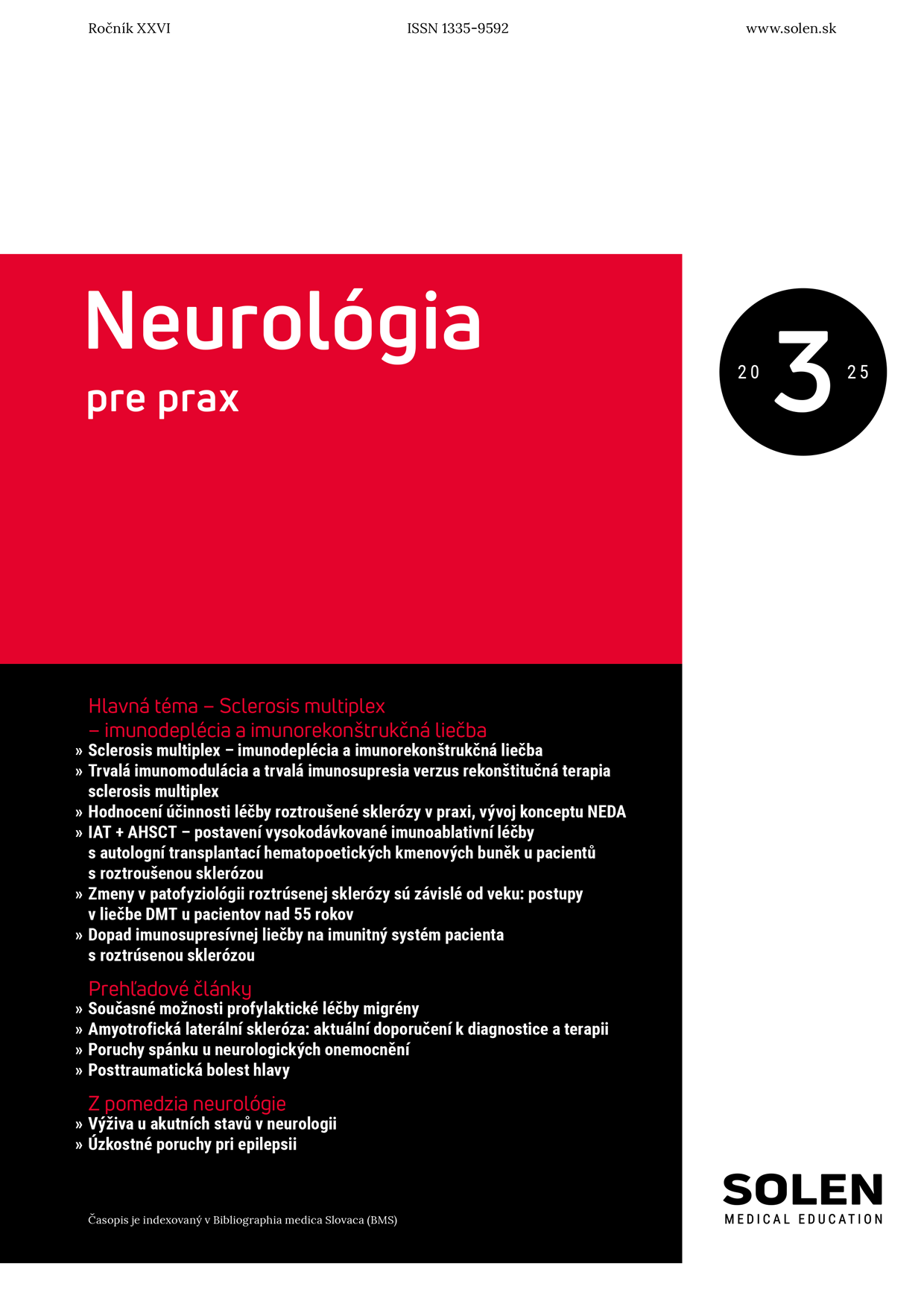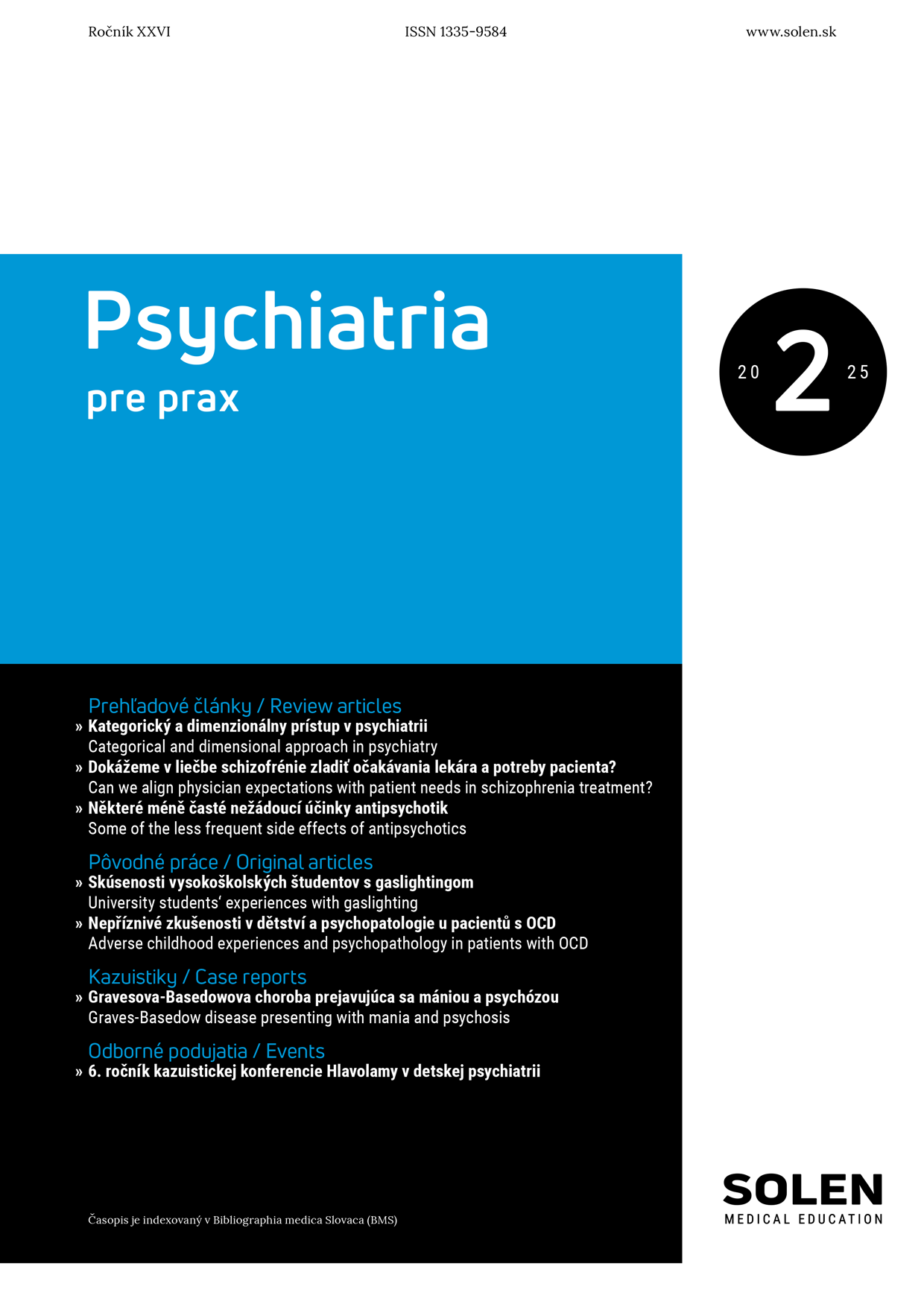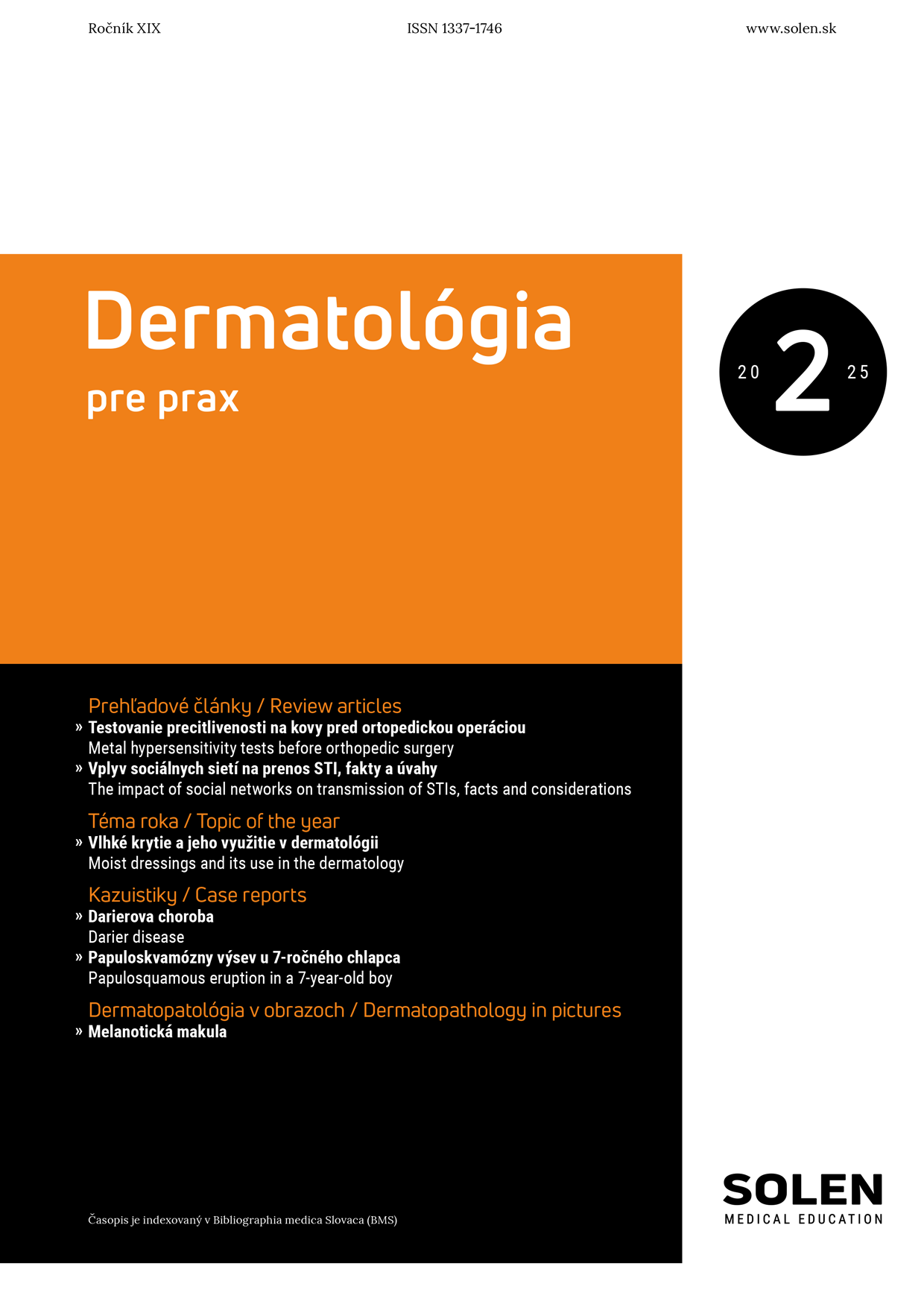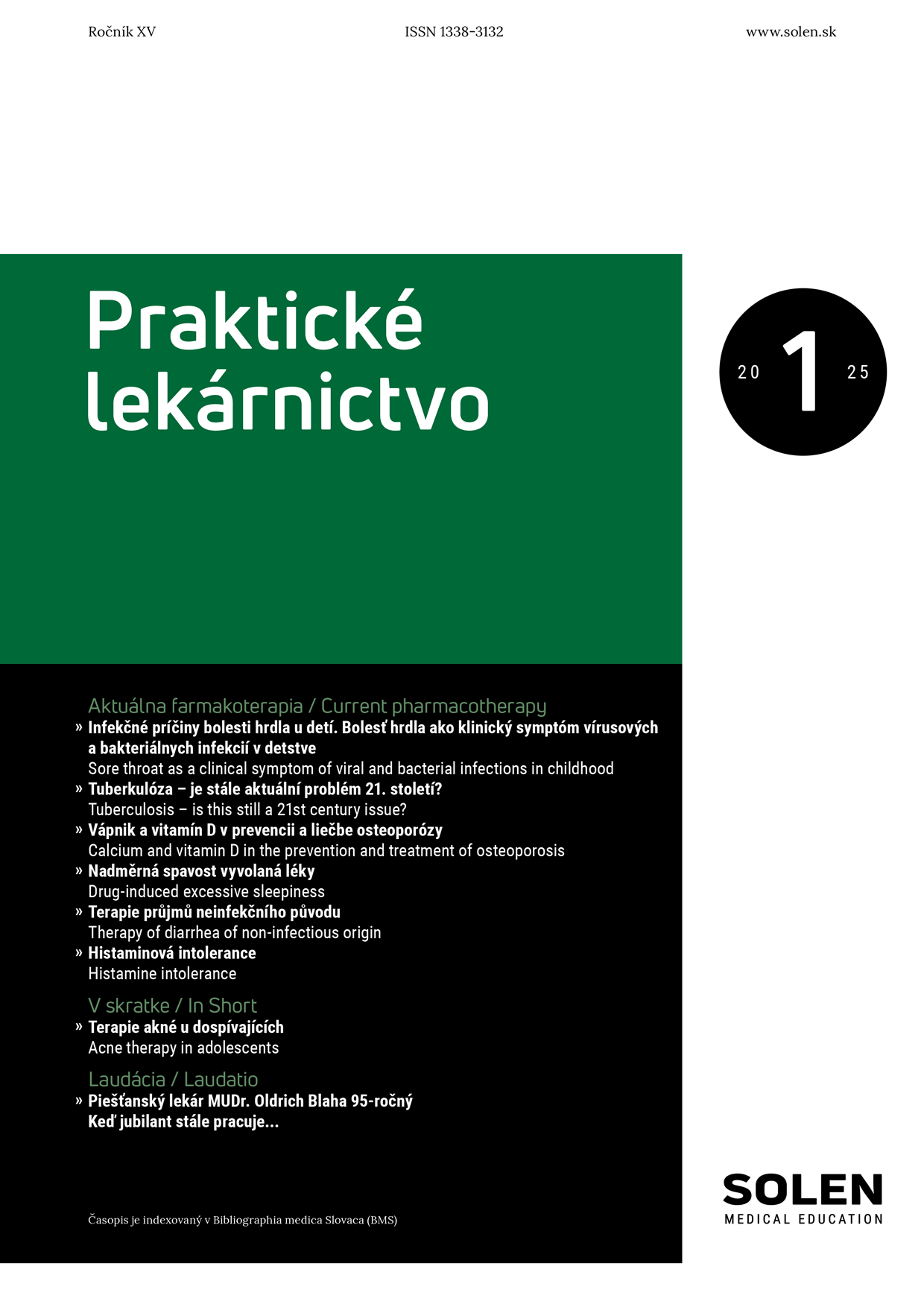Neurológia pre prax 5/2021
Lipoprotein(a) as risk factor for ischemic stroke
Lipoprotein(a) is currently considered to be an independent risk factor for atherosclerosis. The distribution of Lp(a) levels in the population is very large and is genetically determined in up to 90 %. According to current recommendations, the level of Lp(a) should be determined at least once in a lifetime and then regularly monitored in patients with elevated Lp(a). Up to 80 % of the population has an Lp(a) level of less than 50 mg/dl (125 nmol/l) that is found to be the reference range. However, cardio – and cerebrovascular risk increases linearly with increasing Lp(a) levels even at Lp(a) values below 50 mg/dl (125 nmol/l). Higher levels of Lp(a) are associated with coronary heart disease, myocardial infarction, aortic stenosis and ischemic stroke, especially cryptogenic in younger adults. Lp(a) not only interferes with the atherosclerosis process, but it has also prothrombogenic and pro-inflammatory properties.
Keywords: lipoprotein (a), atherosclerosis, ischemic stroke, statins, antiPCSK9 treatment


